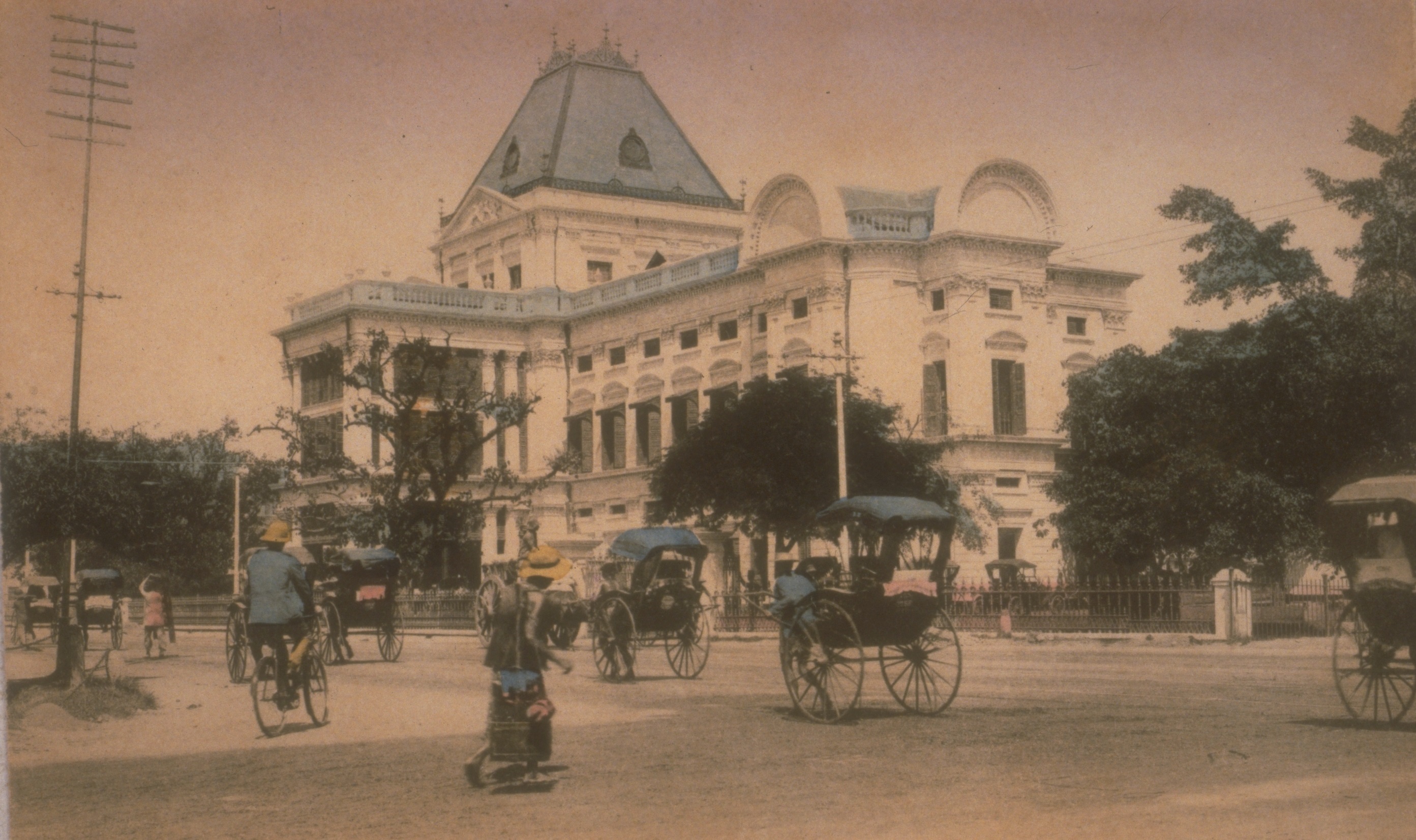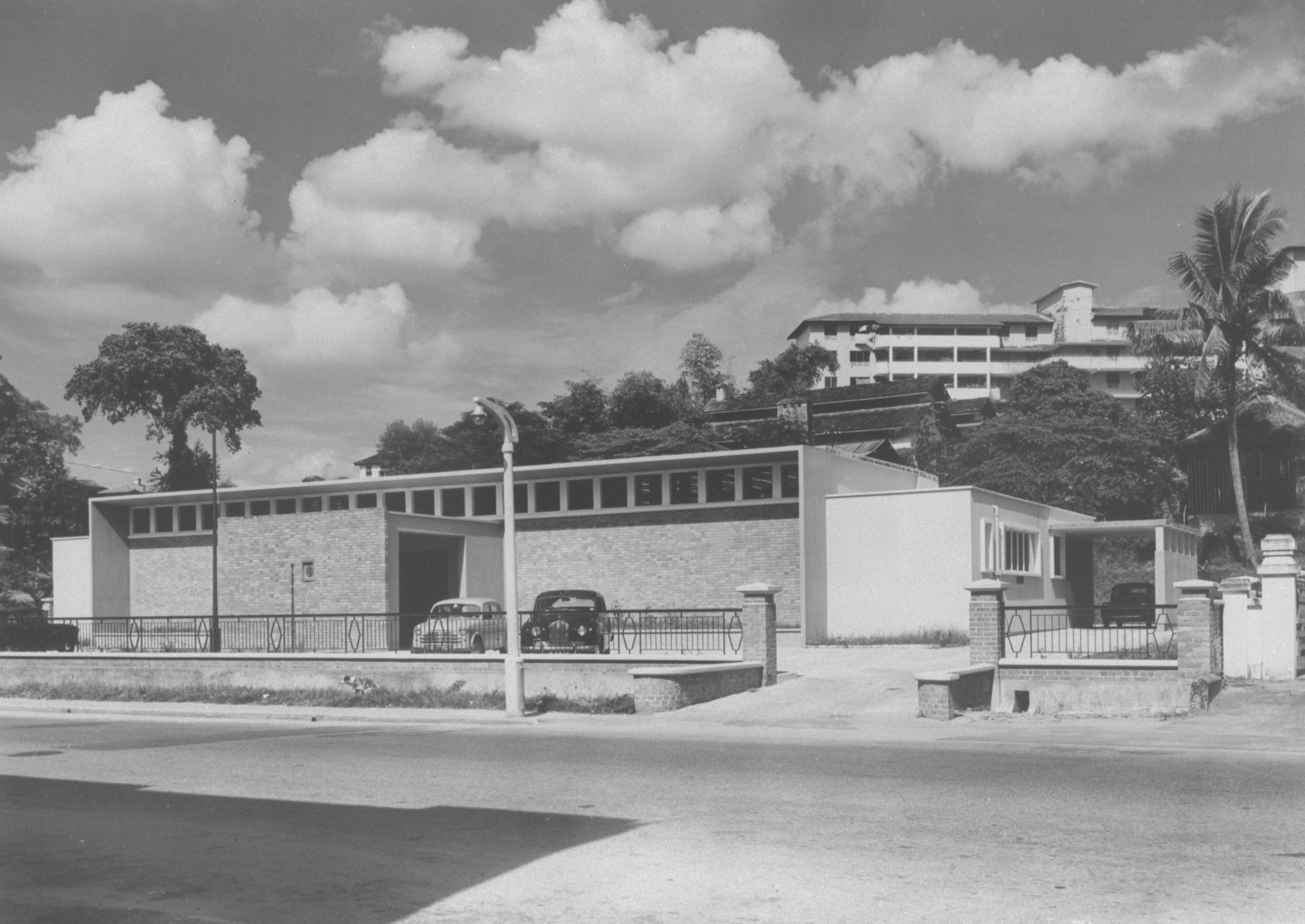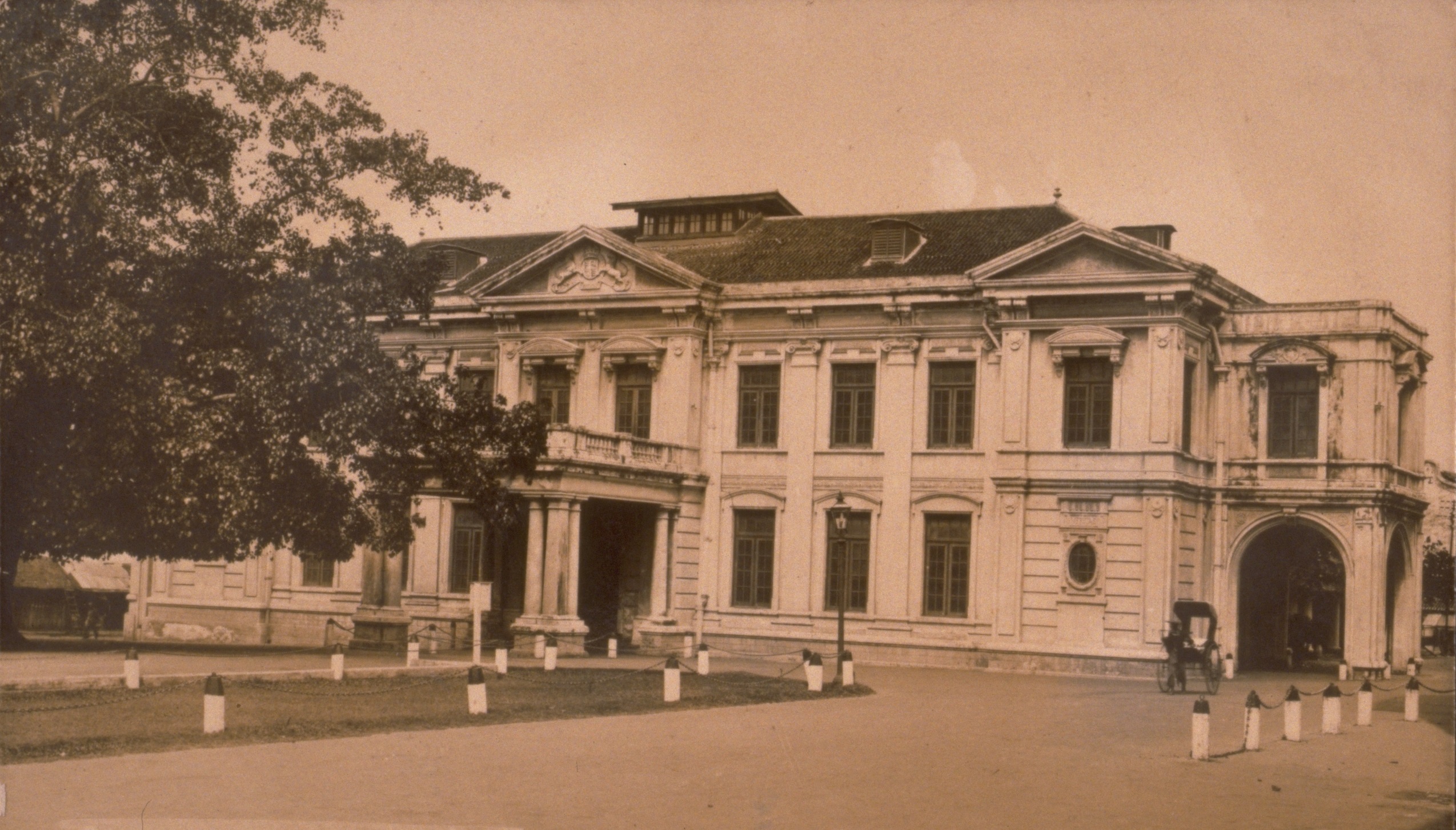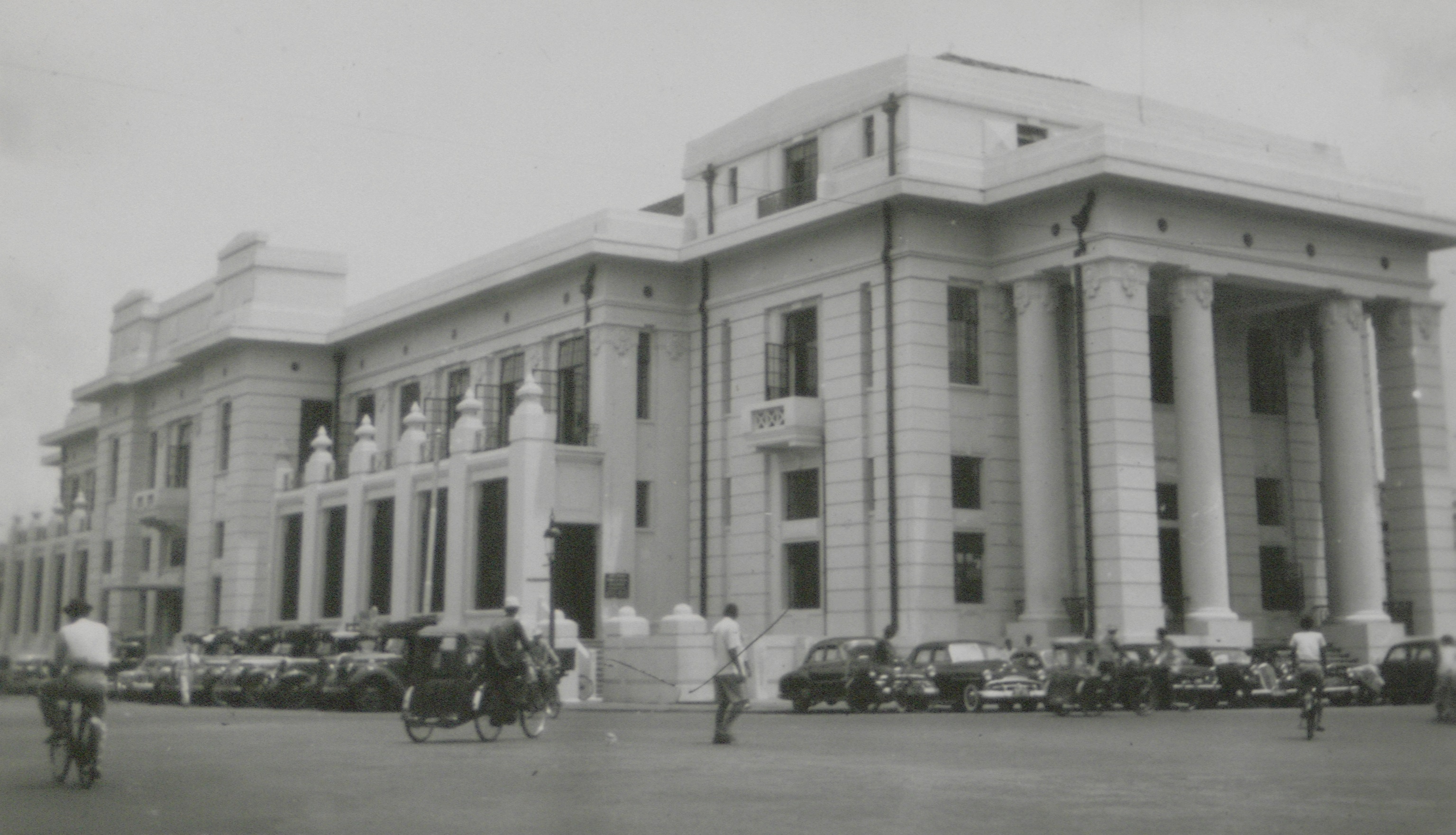History of the courts
Milestones in Singapore's legal history
Since the founding of Singapore, the legal system has evolved in line with the nation's historical developments. The Singapore courts have come a long way to what it is today, from adopting British laws in the colonial era, to having Japanese military law during the Second World War and to coming under Malaysian laws during the brief merger with Malaysia.
Below are the milestones in the history of the courts.
Supreme Court
- The founding of Singapore and the First Charter of Justice.
- The Second Charter of Justice.
- The Third Charter of Justice.
- New developments in the judicial system from 1867 to 1941.
- The Japanese Occupation during the Second World War.
- Developments during the post-war years leading to independence.
- Post-independence developments.
State Courts
- Enactment of Subordinate Courts Act 1970.
- Key developments in the State Courts.
- Renaming of Subordinate Courts to State Courts.
- Relocation to the new State Courts Towers.
Family Justice Courts
- Origins of the Family Courts.
- Co-location of Family Courts and Juvenile Court.
- Establishment of the Family Justice Courts.
Supreme Court history
The Founding of Singapore and The First Charter of Justice
Modern Singapore was founded on 6 February 1819, when Sir Thomas Stamford Raffles signed a treaty of friendship and alliance with Sultan Hussein of Johor and Temenggong Abdu'r Rahman, the governor of a Malay settlement at the mouth of the river.
For proper administration of the island, Raffles declared a code of law known as the “Singapore Regulations”. This put in place a basic legal system with a uniform law that applied to all inhabitants.
After Raffles left Singapore in 1823, Dr John Crawfurd from the East India Company took over the government of Singapore. Crawfurd replaced the Singapore Regulations with a Court of Requests for minor civil cases overseen by an assistant resident, and a Resident's Court for all other cases which he presided over.
The Second Charter of Justice
In 1825, the British Parliament passed Statute 6 Geo IV c 85, enabling the King to administer justice in the British colonies of Singapore and Malacca.
The Second Charter of Justice was issued on 27 November 1826. This Charter established the Court of Judicature of Penang, Singapore and Malacca. In criminal proceedings, the court was to administer criminal justice as the courts did in England, with due attention given to the religions and manners of the native inhabitants. In civil proceedings, the court was to give judgment and pass sentence according to justice and right.
The Governor and the Resident Councillor acted as two judges of the court. The third judge was the Recorder, who was based in Penang and had to travel the circuit to Malacca and Singapore.
The Third Charter of Justice
The Third Charter of Justice was granted on 12 August 1855 to cope with the increased judicial workload due to Singapore's rapid development.
Under this Charter, the Court of Judicature was re-organised into two divisions. The first division had jurisdiction over Singapore and Malacca and comprised the Recorder of Singapore, the Governor and the Resident Councillors of Singapore and Malacca. The second division had jurisdiction over Penang.
New developments in the judicial system (1867 - 1941)
Refer to the following for key legislation that further shaped Singapore's legal system during its colonial days:
- The Judicial Duties Act of 1867 changed Singapore's judicial system further.
- The governor of the Straits Settlements ceased to be a judge of the Court of Judicature, although the resident councillors continued to preside over cases under their new title of lieutenant-governors.
- This Act also renamed the "Recorder of Singapore" to the "Chief Justice of the Straits Settlements". Sir Peter Benson Maxwell, then-Recorder of Singapore, became the first Chief Justice of the Straits Settlements in 1867.
- The Supreme Court Ordinance 1868 abolished the Court of Judicature of Penang, Singapore and Malacca and replaced it with the Supreme Court of the Straits Settlements.
- The Courts Ordinance of 1873 reconstituted the court, so that it now comprised the Chief Justice, the Judge of Penang, a Senior and a Junior Puisne Judge.
- One division of the court sat in Singapore and Malacca, whilst another sat in Penang.
- The Ordinance also conferred on the Supreme Court of the Straits Settlements the jurisdiction to sit as a Court of Appeal, with final appeals lying to the Judicial Committee of the Privy Council in England. Previously, appeals had lain only to the King-in-Council.
- The Courts Ordinance of 1878 was passed in response to the United Kingdom Judicature Acts of 1873-75, which modified the court structure in England.
- Under the Ordinance, the jurisdiction for the Supreme Court of the Straits Settlements was aligned with the new English High Court.
- The Courts Ordinance of 1907 allowed Judicial Commissioners of the Federated Malay States to be appointed from time to time to perform the duties of a judge in the Supreme Court of the Straits Settlements.
- The Court of Criminal Appeal Ordinance of 1934 established a Court of Criminal Appeal. Previously, the Court of Appeal only heard appeals for civil cases.
The Japanese Occupation during the Second World War
The courts ceased to function when the Japanese invaded Singapore in 1942. The Japanese established a Military Court of Justice to administer military law.
In a Proclamation dated 27 May 1942, the courts were re-opened. They were allowed to follow the former system of laws as long as they did not interfere with the military administration.
The Syonan Supreme Court or "Syonan Koto-Hoin" opened on 29 May 1942. A court of appeal was also created, but it never sat.
Developments during the post-war years leading to independence
Following the surrender of the Japanese on 12 September 1945, the British military temporarily administered Singapore. They declared that all Japanese proclamations and decrees ceased to have effect, and that all laws and customs existing immediately prior to the Japanese occupation will be respected.
The British military administration ended on 31 March 1946. The Straits Settlements were also disbanded and Singapore was made a separate Crown Colony on 1 April 1946. The Singapore Colony Order in Council established the Supreme Court, consisting of a High Court and a Court of Appeal. The Court of Criminal Appeal continued to function. Final appeals lay to the judicial committee of the Privy Council.
On 2 May 1955, Mr Tan Ah Tah became the first local to be appointed a judge of the Supreme Court. Mr Frederick Arthur Chua and Mr Wee Chong Jin were subsequently appointed on 15 February 1957 and 15 August 1957 respectively. Mr Wee Chong Jin was the first local member of the Singapore Bar to be appointed to the Supreme Court Bench. Mr Tan Ah Tah and Mr Frederick Arthur Chua were both from the Colonial Legal Service.
On 5 January 1963, Mr Wee Chong Jin became the first Asian to be appointed the Chief Justice of the State of Singapore. His appointment marked a break in the long-standing tradition of appointing British Chief Justices for Singapore, the last of whom was Sir Alan Rose.
Singapore's judicial system was altered once again following her merger with Malaysia on 16 September 1963. The Federation of Malaya Act came into force, establishing the Federal Court of Malaysia and the structure of the Malaysian judicial system. The Malaysian Courts of Judicature Act 1964 repealed the provisions relating to the Singapore Supreme Court in Singapore's Courts Ordinance and also the whole of the Singapore's Court of Criminal Appeal Ordinance.
The High Court of Malaysia replaced the Supreme Court of the Colony of Singapore, while the Court of Appeal was assimilated into the Federal Court. The Judicial Committee of the Privy Council continued to be the final appellate court.
Post-independence developments
Although Singapore became independent on 9 August 1965, the ties between the judicial systems of Singapore and Malaysia were not severed until 1969. The Supreme Court of Judicature Act 1969 re-established the Supreme Court of Singapore, comprising the High Court, the Court of Appeal and the Court of Criminal Appeal.
Jury trials were abolished in 1969, by an amendment to the Criminal Procedure Code which provided for trials of capital offences to be heard by two judges. This arrangement continued until 18 April 1992, when the Criminal Procedure Code was amended to allow for trials of capital offences to be heard before a single judge.
The next milestone for Singapore's judicial system was the introduction of Judicial Commissioners to the Supreme Court Bench. Mr Chan Sek Keong, became the first Judicial Commissioner on 1 July 1986. A Judicial Commissioner is appointed for specific periods of time and may exercise the powers and perform the functions of a judge. In this capacity, he enjoys the same immunities as a judge.
On 28 September 1990, Mr Wee Chong Jin retired as Chief Justice, and Mr Yong Pung How succeeded him.
The first female to be appointed to the Supreme Court Bench was Ms Lai Siu Chiu, who was appointed a Judicial Commissioner on 2 May 1991. Thereafter, Ms Judith Prakash was appointed a Judicial Commissioner on 1 April 1992. They were appointed Judges of the High Court on 2 May 1994 and 1 April 1995 respectively.
In 1993, the existing appellate court, which comprised the Court of Appeal and the Court of Criminal Appeal, was reconstituted into a single Court of Appeal for both civil and criminal appeals. The present Court of Appeal normally comprises the Chief Justice and the Judges of Appeal, who rank above the High Court judges. A judge of the High Court may also, on the request of the Chief Justice, sit as a judge of the Court of Appeal.
The first Judges of Appeal appointed were Justice M Karthigesu and Justice L P Thean, both of whom were appointed on 1 July 1993.
State Courts history
Enactment of Subordinate Courts Act 1970
The Subordinate Courts Act 1970 designated the District Courts, Magistrates’ Courts, Juvenile Courts and Coroners’ Courts as subordinate courts. Mr Abdul Wahab Ghows, who was then leading these courts as the district judge and first magistrate, became the first senior district judge.
In 1973, construction began for a new courthouse to consolidate the District Courts, Magistrates’ Courts, Juvenile Courts and Coroners’ Courts which were then located in different parts of Singapore. On 15 September 1975, the Subordinate Courts Building opened its doors at 1 Havelock Square to provide the public with one-stop access to justice.
Key developments in the State Courts
Refer to the following for key developments that further shaped the State Courts:
- The Subordinate Courts Act 1970 required all district judges and magistrates to be legally qualified persons.
- A district judge must be a qualified person for at least 5 years and a magistrate must be a qualified person for at least 1 year.
- In 2014, the requirements were raised. A district judge must be a qualified person for at least 7 years and a magistrate must be a qualified person for at least 3 years.
- Under the Subordinate Courts Act 1970, the Magistrates’ Courts, which used to have jurisdiction over criminal matters only, could hear civil matters. Over the years, the jurisdiction of the District and Magistrates’ Courts have also gradually
increased.
- While the Magistrates’ Courts could hear claims below $1,000 under the Subordinate Courts Act 1970, they can now hear claims of up to $60,000. The District Courts, which had jurisdiction for claims up to $5,000 under the Subordinate Courts Act 1970, can now hear claims of up to $250,000 or up to $500,000 in the case of road traffic accident claims or claims for personal injuries arising out of industrial accidents.
- To provide quicker, cheaper and more informal processes to resolve low-value claims and relational disputes, the State Courts established specialist tribunals for different types of disputes such as the Small Claims Tribunals in 1985, Community Disputes Resolution Tribunals in 2015, and Employment Claims Tribunals in 2017.
- The Court Mediation Centre was set up in 1995 to provide court-annexed dispute resolution (CDR) services to parties with civil matters. Over the years, CDR has become an integral part of the State Courts’ case management strategy. In 2015, the
Centre for Dispute Resolution was established as a division of the State Courts to facilitate the efficient resolution of civil, community and relational disputes.
Renaming of Subordinate Courts to State Courts
On 7 March 2014, the Subordinate Courts were renamed as the State Courts. The name, which combines dignity with gravitas, recognises the key role that these courts play within the community as the primary dispensers of justice.
In addition to the renaming to State Courts, the apex post in the State Courts was redesignated as “Presiding Judge of the State Courts”. This was to reflect the critical role of the presiding judge who has overall responsibility for the leadership and management of the State Courts and is also a judge or judicial commissioner of the Supreme Court.
Relocation to the new State Courts Towers
With the increased demand for legal services by the community, the State Courts Building was assessed to be unable to support the needs of the State Courts over the next 50 years. On 28 May 2014, construction began for a new 35-storey courthouse which was to be situated beside the old building. Meanwhile, the iconic octagonal building was gazetted for conservation in 2013.
On 13 December 2019, the State Courts Building closed its doors and the State Courts commenced full operations in the new State Courts Towers on 16 December 2019. The State Courts Towers is fitted with 53 courtrooms and 54 hearing chambers.
Learn more about the history of the State Courts and the former and current State Courts buildings through the commemorative publication One Havelock Square.
Family Justice Courts history
Origins of the Family Courts
On 1 March 1995, the Family Courts were established under the structure of what was then known as the Subordinate Courts, to hear maintenance and family protection matters under the Women’s Charter. The courts, presided by district judges, were then located at the Paterson Complex at 25-H Paterson Road. On 1 April 1996, proceedings relating to divorce, nullity, separation and guardianship were transferred from the High Court to the Family Courts.
In 1999, works began to retrofit and convert the former Ministry of Labour building at 3 Havelock Square to house the new Family Courts. The new building was designed to include purpose-built courtrooms and hearing chambers fitted with the latest technology then, including electronic retrieval and filing, video conferencing facilities and integrated security systems. It also had counselling and mediation rooms, with segregated and protected waiting areas for victims and witnesses. There was also a childcare centre and facilities for teenagers.
The Family Courts' last day at Paterson Road was on 28 September 2001. It reopened its doors at the new Family Courts building on 1 October 2001. On 11 January 2002, the new building named Family and Juvenile Court Building was officially opened. To commemorate the occasion, a time capsule was buried in the building.
In September 2011, the Child Focused Resolution Centre (CFRC) was set up to conduct mandatory counselling and mediation for divorcing parents with at least one child. The CFRC operated at Central Mall, 1 Magazine Road.
Co-location of Family Courts and Juvenile Court
The then-Juvenile Court also operated at the Paterson Complex while a new courtroom and additional facilities were being constructed in the Subordinate Courts Complex at 1 Havelock Square. The Juvenile Court moved back to Havelock Square on 1 April 1999 with a bigger courtroom, a larger holding area for remand and a family conferencing room. The court subsequently relocated to the current building at 3 Havelock Square in September 2001.
The refurbished building at 3 Havelock Square was subsequently named the Family and Juvenile Court Building. Having the 2 courts under one roof was part of the Subordinate Courts’ plan to have a unified family and juvenile court system given that a family may be involved in multiple proceedings in both the Family Court and the Juvenile Court simultaneously.
Establishment of the Family Justice Courts
In 2014, the Family Courts was restructured to exist as a separate judicial body known as the Family Justice Courts under Family Justice Act. Established on 1 October 2014, the Family Justice Courts comprise the Family Division of the High Court, the Family Courts and the Youth Courts (formerly the Juvenile Court). The apex post in the Family Justice Courts is the Presiding Judge of the Family Justice Courts who is either a Supreme Court Judge or Judicial Commissioner.
In 2015, the Family Justice Courts relocated the CFRC and some of its services and registries to a new facility at the Ministry of National Development Complex at 5 Maxwell Road to better serve the community and to consolidate mediation and counselling services for divorce-related matters. The new facility includes hearing chambers and courtrooms.
In November 2017, an inter-agency committee, the Committee to Review and Enhance Reforms in the Family Justice System (the RERF Committee) was formed. It built on the work of the Committee for Family Justice, which culminated in the establishment of the Family Justice Courts.
The RERF Committee was co-chaired by the then Presiding Judge of the Family Justice Courts, Justice Debbie Ong, and the Permanent Secretaries for the Ministry of Law and the Ministry of Social and Family Development and made recommendations that aimed to further strengthen the family justice system. This included incorporating principles of therapeutic justice in the resolution of family disputes and promoting the use of multi-disciplinary approaches and processes.
A look at former courthouse buildings
Refer to the following for historical photographs of former courthouse buildings in Singapore.

Criminal courthouse at South Bridge Road: The first criminal courthouse was located at South Bridge Road. Built sometime between 1882 and 1885, it housed the District and Magistrates’ criminal courts until 1975, and the Coroners’ Courts until 1956 when it relocated to Outram Road. (Source: National Archives of Singapore)

Coroners’ Courts at Outram Road (Source: National Archives of Singapore)

Civil District Courts at Empress Place: The first District Courts were established in 1907. The present Arts House (formerly Old Parliament House) was home to the Civil District Courts in the early 1900s. In the 1930s, these courts moved into what is now the Asian Civilisations Museum. (Source: National Archives of Singapore)

Chinese Secretariat building at Havelock Road: The Juvenile Court was established in May 1949 to address rising juvenile delinquency in the aftermath of the war. It first operated out of the Chinese Secretariat building, which later became the then Family Justice Courts building. (Source: National Archives of Singapore)








